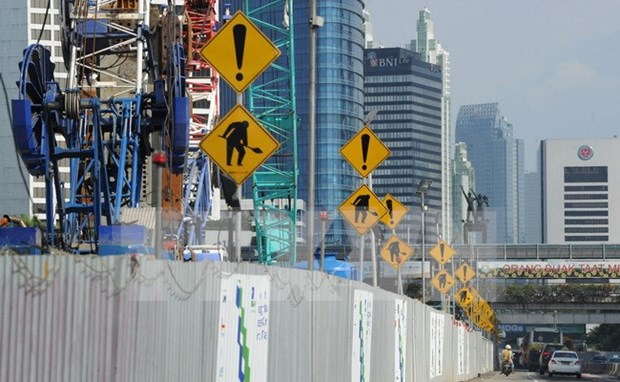Japan vows support for Indonesia’s infrastructure development
The Japan Bank for International Cooperation (JBIC) has announced its commitment to provide Indonesia with up to 3.7 billion USD in loans this year.
 JBIC has announced its commitment to provide Indonesia with up to 3.7 billion USD in loans this year (Photo: AFP/VNA)
JBIC has announced its commitment to provide Indonesia with up to 3.7 billion USD in loans this year (Photo: AFP/VNA)Jakarta (VNA) – The Japan Bank for International Cooperation (JBIC) has announced its commitment to provide Indonesia with up to 3.7 billion USD in loans this year.
JBIC said it would seek opportunities to fund major infrastructure projects in the Southeast Asian country, such as the construction of power plants, railways and toll roads, under the public private partnership (PPP) scheme.
JBIC CEO Tadashi Maeda said the source of funding for Indonesian infrastructure development has shifted from government bonds to the PPP scheme or funding without government guarantee.
The bank signed on October 20 a loan agreement with state electricity firm PLN to provide 310 million USD in loans to finance the construction of PLN’s 800- MW power plant in Tanjung Priok, Jakarta.
The loan will mature in 15 years and cover 70 percent of funds needed to run the 437 million USD project, expected to be completed by 2019. The power plant is the Japanese bank’s second project with PLN funded without the government’s guarantee.
The other project was the construction of a 1x315 MW power plant in Lontar, Banten, which broke ground last June.
JBIC stated that it would also eye funding for the construction of a 2x800 MW power plant in West Java, one of the country’s biggest power plant projects.
JBIC will also coordinate with state infrastructure financing firm Sarana Multi Infrastruktur (SMI) and the National Development Planning Agency (Bappenas) to look for other potential projects to be funded, Tadashi Maeda said.
JBIC revealed that on average, bank budget allocation for Indonesian infrastructure development reached up to 2 billion USD annually. The realisation of funding from JBIC in the last five years has hit 8 billion USD.
The Indonesian government estimates it will need 4.7 quadrillion Rupiah to finance various infrastructure projects for the next few years. However, it could only cover 40 percent of the funding from the state budget.-VNA












